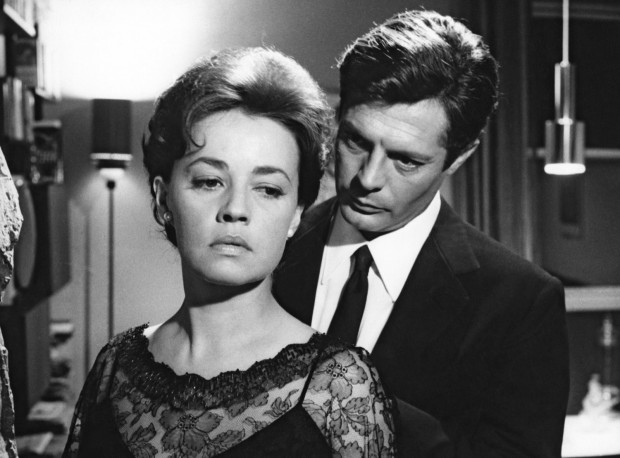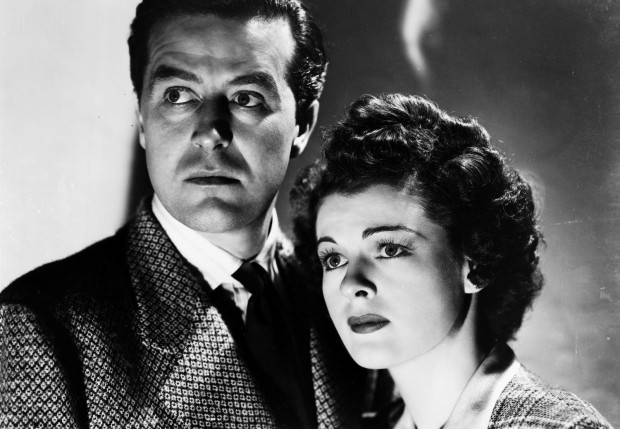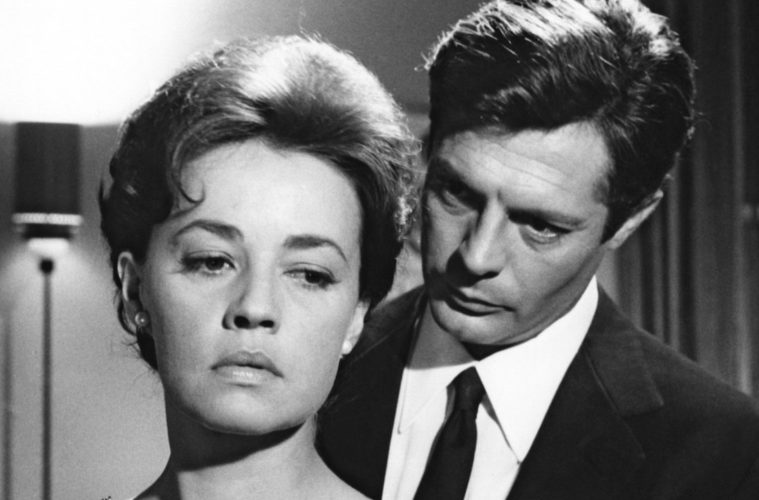
Horror, as a cinematic genre, is continually thought about in terms of the monsters it creates. There’s Frankenstein, the Invisible Man, the creature from the Black Lagoon and the knife-wielding psycho. (Take your pick for specifics on the lattermost.) But in even the best monster movies, the horror — the terror, the fears, the sweat — are created much earlier than some unholy beast’s first appearance. To breed such tensions, one requires a space where the fuel of nightmares can be unleashed; horror, after all, is not really about a creature so much as it concerns the effect. As the word, itself, derives from the Latin term horrere — which translates into “to stand on end” — more essential than creatures have been the spaces that jar, dislocate, darken, and distort. At its finest, the genre combines psychological affects and physical effect into one inimitable form.
The horrors of space figure into two October releases from Criterion — one certainly obvious, one less immediately evident. Some will undoubtedly question the attempt to form a conversation between Lewis Allen’s 1944 haunted house mystery, The Uninvited, with Michelangelo Antonioni’s 1961 marriage drama, La Notte. Yet cinephilia often leads us down paths that we can only explain via images — the sort where, as Ignatiy Vishnevetsky describes it, “the recognition of an element in one film from one’s memory of a radically different one.” (In the interest of nothing other than transparency, it also helps when one has two discs to review and only a single column in which to carry out their work.) And, so, while given sufficient reasons to fear the space in Allen’s work (ghosts, simply), the justifications for spatial anxiety in Antonioni are more abstract, yet told with frames that are, at times, equally frightening. Divergent though they would initially appear, these are both films concerned with our physiological horrors manifesting themselves in relation to a physical existence.
Starting with those pesky ghosts, the more classical horror story of the two films noted here follows a London-bred brother-sister duo, Rick (Ray Milland, chipper) and Pamela (Ruth Hussey, snarky without pretensions), who come across an empty mansion on a beach off the coast north of their city dwellings. Finding the mansion’s current owner, Commander Beech (Donald Crisp, pleasurably sinister), to be quite negotiable on pricing, the duo move into the large space and make it their own. (While questions of why a brother and sister, in their older age, would live together are never raised, we need not worry — promises of matrimony awaits them at the end of this Hollywood production.) But, as Rick and Pamela discover, the Commander’s affable agreement has a sinister side — one involving the howling screams of the walls at night and, no less, something concerning the Commander’s pernicious granddaughter, Stella (Gail Russell, a little tacky for a crucial role; others may argue otherwise), as well as the girl’s own departed mother.

If this outline of The Uninvited should resonate as a bit too standard, Allen and director of photography Charles Lang (who shot The Big Heat, Ace in the Hole, and Charade, to name just a few of many gems) treat the horror with solemnity instead of scares. Their shots often find beauty in the darkness of spaces and the almost pitch-black unknown that surrounds the actors’ fearful gazes, often stranding them in an almost-pure sense of isolation. The howls of wind and crashing waves (an image that certainly recalls Antonioni) emphasize the mystery of Stella’s past, even as its veil is continually pulled back. Lang and Allen are less interested in creating classical scares (e.g. revealing the ghosts that haunt this house [an unfortunate studio mandate]) than they are in placing these characters with a world that, as something of a precursor to Spielberg’s first axiom, is seductively magical in its terror. The film’s gothic home is filled with pitch-black mirrors, open windows which allow the sea to create flickering dances of light upon ceilings, and candles & oil lamps that always move this light in the most surreal of ways. In The Uninvited, horror is not a series of scares, but a tone and mood writ between the imagery and Victor Young’s carefully pitched score; the title might suggest danger, but, instead, it sucks us deeper inside. We always look closer when staring into the dark.
If The Uninvited plays, to today’s audiences, as more “fun” than what we’ve come to associate with cinematic thrills, La Notte is, perhaps, edging closer and closer to representing a modern-day horror story. Antonioni remains so canonized in terms of what came to be considered “modernist” cinema that pinpointing his sense of “originality” now appears almost trite. (Though, oddly enough, he became a source of derision for a number of major film critics, including Manny Farber, Pauline Kael, and, depending on the picture, Andrew Sarris.) What strikes yours truly, seeing these films, is the huge source of anxiety they create within nothing more than the mise-en-scène of individual shots. The opening image — a camera tracking down the reflection of a city found on a building’s side — with its collection of both traffic noises and something otherworldly, suggests the film might as well be science fiction, or at least a precursor to Tati‘s Playtime (though mostly without the laughs). Or take one of the most striking shots, as a ferocious young mental patient grabs Marcello Mastroianni‘s Giovanni and pulls him into her room for an afternoon tryst. Antonioni frames her in the corner of an otherwise-pure white wall, a shot as terrifying in its surreal impossibility as anything in The Uninvited. Or, to choose one more, Lidia’s (Jeanne Moureau) stroll through the city culminates in her discovery of a group of model rocket builders. When one shoots off, an enormous smoke cloud engulfs the screen, slowly approaching like an engulfing mass out of Frank Darabont’s The Mist — maybe, even, an atomic bomb.
The supernatural impetus behind The Uninvited‘s horror are a stand-in for problems related to family; La Notte is essentially the same, though no ghosts are needed. His film is about marriage, and a disillusioned one; the anxieties manifest themselves — not through dialogue, but via a physical representation of what is felt. The Uninvited literalizes its horrors of domesticity (the film’s final line about mother-in-laws provides both a closing statement and a Freudian slip with which to read the film), but both certainly play off the fear of space itself, whether in the home or city. When the couple have an argument in their bathroom, the brick-like walls seem to be closing in on them, a claustrophobia crushing the pair together until they can no longer breathe.
Likewise, the carnival-esque party that dominates La Notte‘s second half is filled with protruding walls and constantly evolving spaces, among other strange horrors — a grotesque portrait hangs in the background, gigantic sliding doors create false barriers, and there’s a pool which, thanks to Gianni Di Venanzo’s cinematography (as well as Criterion’s excellent transfer), appears to be filled with blackened tar instead of cooling water. As the rain begins to pour through this one-night journey, the viewer becomes accustomed to Antonioni’s horrors of space; if the actors seem reserved in their emotions, highly subjective framing would suggest that such discomforts do not go unnoticed by the director. As Giovanni and Lidia emerge into daylight at the conclusion, confronting the world’s remaining gray skies, their marriage might be doomed — but at least, like the finally brightened world of The Uninvited, they can clearly spot what lies ahead.
The Uninvited and La Notte are now available on The Criterion Collection.

